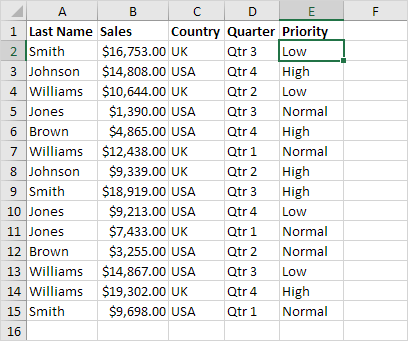7 Ways to Customize Your Excel Sheets Easily

Microsoft Excel is a powerful tool used by millions of people for data analysis, project management, budgeting, and countless other tasks. Whether you're a seasoned professional or a beginner, customizing your Excel sheets can significantly enhance your productivity and streamline your work processes. Here are 7 ways to make your Excel spreadsheets work smarter for you.
1. Use Conditional Formatting for Data Visualization

Conditional formatting allows you to apply different formats to your cells based on the data they contain. This is invaluable for:
- Highlighting anomalies or key data points.
- Creating heat maps for better trend visualization.
- Setting up data bars to show the length of values visually.
Here's how to apply conditional formatting:
- Select the cells you want to format.
- Go to the 'Home' tab.
- Click on 'Conditional Formatting' and choose the rule you want to apply (e.g., 'Highlight Cell Rules', 'Top/Bottom Rules', etc.)
- Set your conditions and the styles you wish to apply.
🔔 Note: Conditional formatting is dynamic; changes in cell values will automatically adjust the formatting accordingly.
2. Master Data Validation for Error-Free Input

Data validation is crucial for maintaining the integrity of your spreadsheets. Here's how you can use it:
- Restrict data entry to specific ranges or values.
- Provide drop-down lists to ensure users select from predefined options.
- Create custom validation rules with formulas to meet specific criteria.
Here’s a simple example for setting up data validation:
- Select the cell or range where you want to apply validation.
- Go to the 'Data' tab, then 'Data Validation'.
- Choose the criteria (e.g., 'List', 'Date', 'Decimal', etc.).
- Set up your rules and, if necessary, provide an input message or error alert.
3. Leverage Excel Tables for Dynamic Ranges

Converting ranges to Excel tables offers several benefits:
- Automated row insertion or deletion.
- Dynamic ranges for formulas, pivot tables, and charts.
- Easy sorting, filtering, and formatting.
Here’s how to create a table:
- Select your data range.
- Go to the 'Insert' tab and choose 'Table'.
- Confirm the range and choose whether your data has headers.
Once converted, your table will have structured references that make formulas much more manageable.
4. Customize the Ribbon for Efficiency

Customizing the Ribbon in Excel can make your most-used features instantly accessible:
- Create custom tabs or groups.
- Add frequently used commands to the Quick Access Toolbar.
- Remove unnecessary tabs or commands.
Follow these steps to personalize your Ribbon:
- Right-click anywhere on the Ribbon and select 'Customize the Ribbon'.
- Choose 'New Tab' or 'New Group' to add your custom tabs or groups.
- Drag commands from the left panel to your new or existing tabs.
- Use the 'Quick Access Toolbar' for commands you use frequently.
5. Utilize VBA Macros for Automation

Visual Basic for Applications (VBA) can automate repetitive tasks in Excel. Here are some applications:
- Automate data entry or report generation.
- Create custom functions not available in standard Excel.
- Develop user interfaces for easier data interaction.
Begin with a simple macro:
- Open the VBA editor by pressing ALT + F11.
- In the Project Explorer, select the workbook you want to work on.
- Insert a new module by right-clicking on any existing one.
- Write or paste your VBA code. Here’s a simple macro to clear all values:
Sub ClearAllValues()
Cells.ClearContents
End Sub
💡 Note: Always back up your workbook before running new macros to avoid accidental data loss.
6. Implement Custom Styles for Consistency

Creating custom styles helps maintain a consistent look:
- Save time by reusing your formatting settings.
- Enhance the professionalism of your spreadsheets.
- Easily update multiple sheets with one change.
To create a custom style:
- Go to 'Home' > 'Cell Styles' > 'New Cell Style'.
- Name your style and define the formatting attributes you want.
- Apply your style to cells by selecting them and choosing your custom style from the 'Cell Styles' menu.
7. Enhance Interactivity with Hyperlinks and Drop-Down Menus

Adding interactivity can make your spreadsheet more user-friendly:
- Hyperlinks for navigation between sheets or to external resources.
- Drop-down lists for quick data entry.
To insert a hyperlink:
- Select a cell or text where you want the link.
- Go to 'Insert' > 'Hyperlink'.
- Choose the destination (a place in this document, an existing file or web page).
To set up a drop-down menu:
- Select the cell for your drop-down list.
- Navigate to 'Data' > 'Data Validation'.
- Select 'List' from the 'Allow' drop-down and input your list items in the 'Source' field.
🔎 Note: Hyperlinks and drop-downs not only enhance usability but also make data entry more accurate.
Customizing your Excel spreadsheets can transform how you work with data, making your tasks more efficient, your spreadsheets more visually appealing, and your data more accurate. By implementing these seven techniques, you will empower yourself to create Excel documents that are not only functional but also tailored to your workflow, reducing errors, and increasing productivity.
How can conditional formatting be used to highlight due dates?

+
You can set conditional formatting to change the color of cells based on the proximity to a due date. For example, you might use a green fill for dates far from due, yellow for nearing, and red for overdue dates.
What are the limitations of custom styles in Excel?

+
Custom styles can only modify the appearance (e.g., font, color, borders) and cannot alter cell functionality or behavior. Also, they might not transfer correctly when moving between different versions of Excel or other spreadsheet software.
Can I share macros between different users?

+
Yes, you can share macros by saving your workbook as a macro-enabled file (.xlsm). However, ensure that all users have the necessary permissions to run macros and that the macro code is compatible with their Excel versions.



